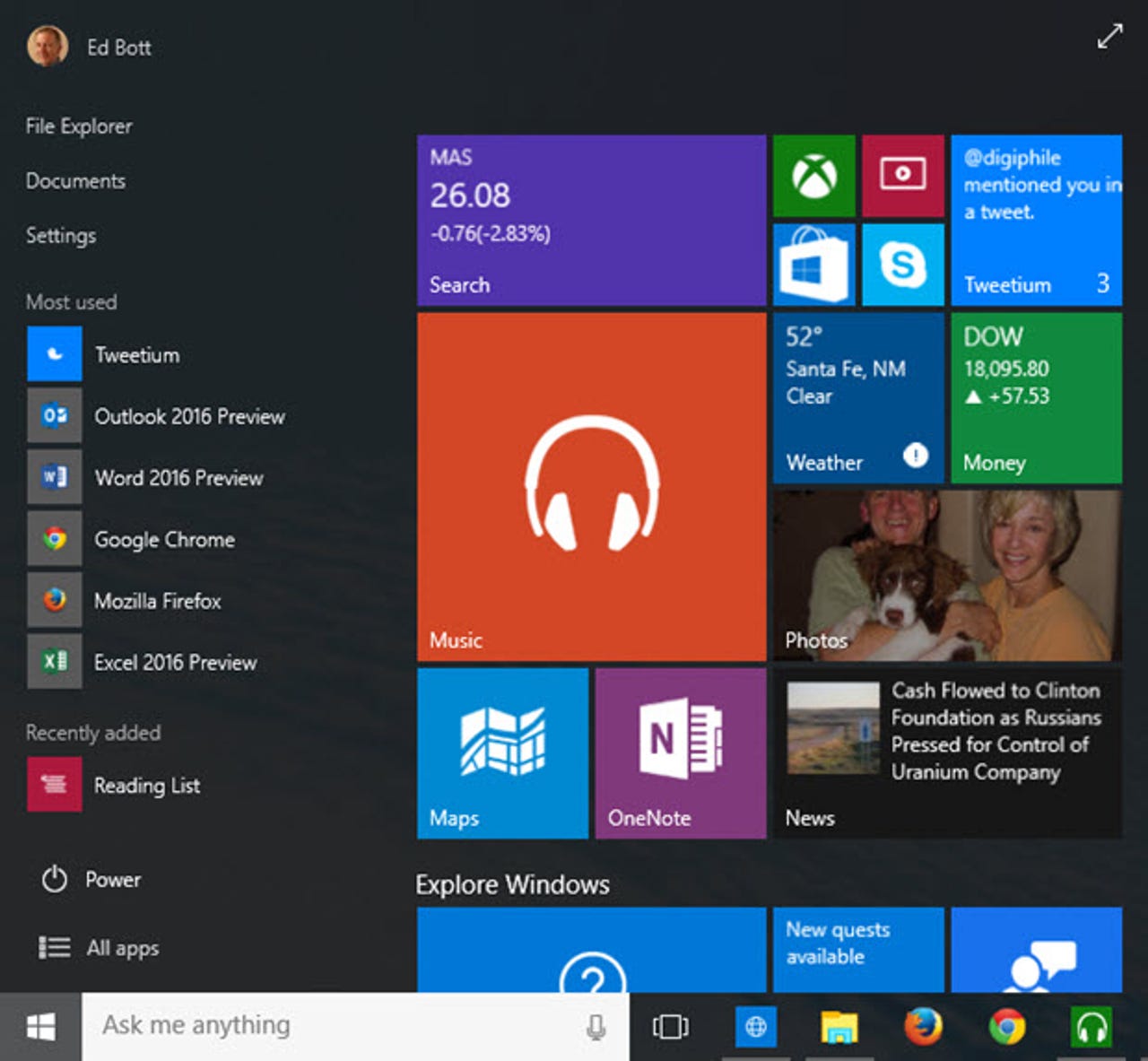Windows 10 build 10061 under the microscope: Can Microsoft hit its summer launch deadline?

That ticking sound you hear is the Windows 10 countdown clock. Microsoft has committed publicly to shipping its new OS "this summer," and if recent reports are true, the launch is only about 90 days away.
So this week's release of Windows 10 Technical Preview build 10061 deserves extra scrutiny. Does it inspire confidence that Microsoft can deliver a solid upgrade this summer when Windows 10 begins rolling out to the general public?
That's not a question that I can answer in 1000 words here. But it's one that will be decisively answered by those who have signed up for the Windows Insider program and are providing steady feedback to Microsoft.
I've upgraded three physical machines to build 10061 so far--a Dell desktop, a Surface Pro 3, and a first-generation Surface Pro--as well as two virtual machines, one in Hyper-V on a Windows 10 PC and the other in VMware on a Mac.
In every case the upgrade process was fairly quick and straightforward, with only minor issues to deal with during and immediately after setup. I had to manually fiddle with the network adapter settings on my desktop PC to get wired Ethernet working properly (a problem caused by an old Hyper-V virtual network switch), and I also needed to use a command-line trick to get Windows 10 Enterprise edition activated properly when the published product key no longer worked.
If you're the sort who normally skips the documentation, this would be a good time to break that habit. Some interesting bugs are documented in the release notes for this build, and knowing the workarounds could save you a fair amount of time and frustration.
Visually, you'll notice some minor changes, including a new look for the Task View button on the taskbar. The default them is now dark, a change that's especially noticeable when receiving notifications.
The Start menu continues its slow evolution. The power button has moved from the top right to the bottom left, and The Start menu itself is now resizable, allowing room for more tiles on the right side of the list of apps.

In my experience, the whole Start experience still feels a bit unstable. In just a few hours of use, it closed unexpectedly (but reopened immediately) several times.
The migration of system settings from the old Control Panel to the new Settings app continues as well. The Personalization pane, for example, is now fully fleshed out with options that were previously in the desktop Control Panel: Background, Colors, and Themes.
The Photos app has a few improvements, including the first appearance of the Albums feature. More interesting is the first appearance of the Outlook Mail and Calendar apps. Those universal apps were previously available only on phones running the Windows 10 Technical Preview. (I'll have a more detailed look at these apps later.)
Some changes are clearly placeholders: The new-look battery status window, for example, includes what appears to be a new feature that will pin down the cause of high battery usage. But the message says only, "This feature will come soon."
Just about every new app includes a hamburger menu, the controversial new control borrowed from other operating systems. In theory, this menu should include only settings or actions you don't need to use often. All of the MSN apps - News, Sports, Weather, and so on - have a hamburger menu in the upper left corner. Clicking it unveils a menu of options in a pane along the left side, as in the Money app, shown here.
The Project Spartan browser doesn't include any obvious differences, although it seems snappier than in earlier builds. One welcome change is an Open with Internet Explorer option, for pages where you need a plugin or extension that isn't part of the new browser.
There are still enough missing pieces (and bugs) in this build to make some observers genuinely nervous about the impending launch date. I expect we will see the modern equivalent of a Release Candidate soon, probably accompanied by a big jump in build numbers. That release could be as early as next week, in conjunction with the Build conference in San Francisco.
It's also worth noting the major change in the Windows development process and the likely slow roll-out of Windows 10 over a period of several months. There's no doubt that the initial release will be a version 1.0 in every sense, but the new rolling updates process should allow time to deal with early issues in months, rather than waiting a year for a service pack.
There's also plenty of time to continue polishing apps, which can be delivered incrementally through the Store and aren't tied to a Windows release.
Still, that ticking sound is getting much louder.